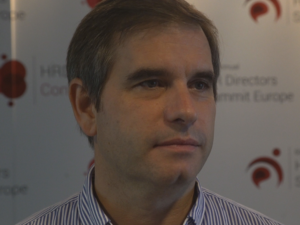10 trends in succession management
- 6 Min Read
The main objective of succession management today is to give the Supervisory Board comfort If you talk to CEO’s and CHRO’s of large organisations, succession management always is a high priority. And it has been for many years. Also, supervisory boards put succession management high on their agenda, as the composition of the top team […]
- Author: HRD Connect
- Date published: Sep 6, 2017
- Categories

The main objective of succession management today is to give the Supervisory Board comfort
If you talk to CEO’s and CHRO’s of large organisations, succession management always is a high priority. And it has been for many years. Also, supervisory boards put succession management high on their agenda, as the composition of the top team is the most vital element through which they can influence the future of the organisation they are overseeing on behalf of the shareholders.
Senior managers and top potentials also have a vested interest in succession management: they are looking for a challenging future.
Where the priority of succession management is high, the happiness with the effectiveness and impact of the succession management process is generally low.
Today there are possibilities to make a change, and increase effectiveness and impact.
10 trends that can be used to increase the impact of succession management
We see the following trends, that can be used to increase the impact of succession management.
- From slow to fast, from annual to real timeThe succession management process should be a lot faster. In fact, you would like to be able to have real time insight in the quality of leadership and the leadership bench. Not only leadership, but also in other critical capabilities.
Speed is also important, as most succession management issues are issues of today, not of the future. When movement is required for one of your global key positions, you want to be able to act fast. - From fragmented to integral insightsThe process should allow us a more integral insight, and not so fragmented as in the past. Example: in former succession management reports it often looked good on the surface (e.g. an average of 1.2 successor per key position), but when you looked a layer deeper the picture was less gloom, for example because top potential A was mentioned as a potential successor for five positions.
- From a rigid to a flexible processThe process should be flexible and adaptable. Example: especially when you are acquiring a new company, succession management becomes very important. What is the strength of leadership of the new company? Do you foresee short-term succession issues? If it takes months to gather the information, the window for the deal might be closed.
In a company I recently spoke to, more than 50% of the employees has a tenure of less than two years. That meant that you are always catching up, if you stick to your traditional process. - From a focus on positions to a focus on talent poolsMost succession management processes are focused on listing potential successors for individual positions. The trend is to look more at the composition and strength of the pools with candidates for clusters of strategic capabilities and related positions. E.g. pools for product management, marketing and sales, leadership is Asia etc. By focusing on pools, you move away from the traditional lists of potential successors per position. If your pool is strong enough, you know you will be able to find people with the right profile when you need them.
- From secret to transparentSuccession management used to be an almost secret process. Only the executive board had total insight (except when it came to their own position). Now more transparency and openness is required and beneficial.
- To an increased employee involvementIn the past, the ‘subjects’ of the succession management process were hardly involved in the process. They were sometimes consulted (“Are you internationally mobile?”), but most of the time their involvement was limited. As people are more and more driving their own career, you want an increased involvement. Example: most of the personal data in succession management systems is not up-to-date. In LinkedIn, the open career network, most of the profiles are up-to-date, as the participants have a clear interest to keep the system up-to-date. More and more companies use LinkedIn as their internal database, because it is more reliable.
- Considering external candidatesYou want the process to be more open, and not only restricted to employees currently on the pay roll of the company. Many good candidates are part of the network of companies, and not necessarily on the payroll today. You want to include them in your search and considerations.
- Consider individuals, teams and networksMost succession management processes focus on individuals. Today the networks the individuals have, inside and outside the organisation, are also very important. You want to be able to map these networks and to attach a value to them. In addition, it might be worthwhile to sometimes transfer teams, and not only individuals. If a team has been successful in introducing a new product in market X, this might be the best team to repeat this is market Y.
- From subjective to objective, from gut feel to data drivenMore objective criteria are required. Success criteria are often not so clear. The assumption is that a high score on the leadership model and a good track record are good predictors of success, but is this really true? You would like to be able to develop a more objective view, based on available data.
If you can use more objective data, you also become less dependent on the subjective opinions and limited line of sight of senior managers.| - From the usual suspects to surprising appointmentsHow often are you surprised by the candidates on the shortlist provided by HR? If only the usual suspects are on the list, it might be that one aspect is overrated: the amount of exposure to senior management. Those who appear on the list have cleverly made sure senior management has noticed them. Are they the best candidates for new challenging opportunities? Probably not.
This article was published earlier on the website of the HR Trend Institute
Tom has an extensive experience in HR Management in multinational companies. He worked in senior HR positions at Fugro, Arcadis, Aon, KPMG and Philips Electronics.
He has a keen interest in innovative HR, HR tech and how organizations can benefit from trend shifts.







